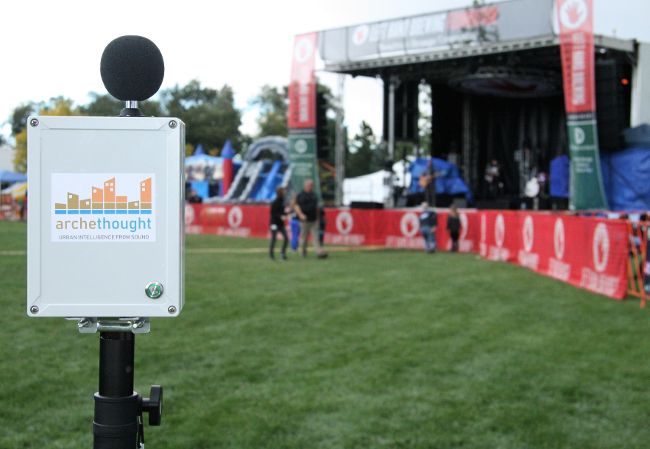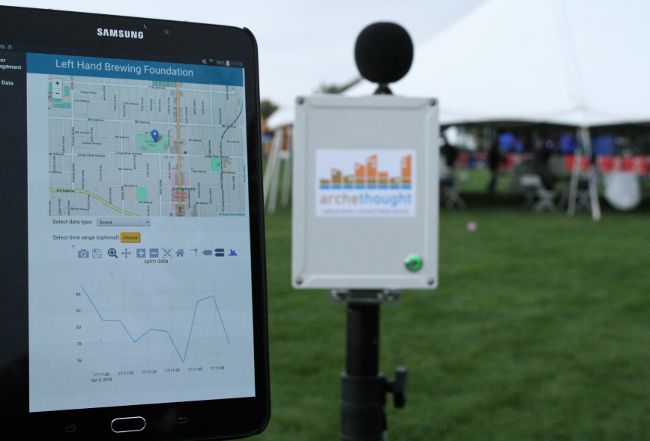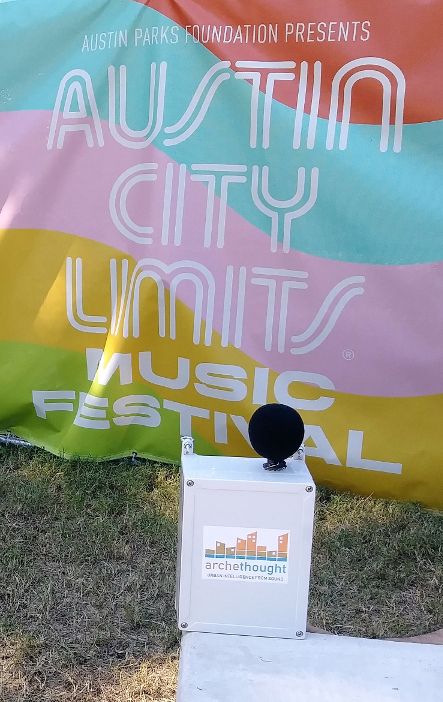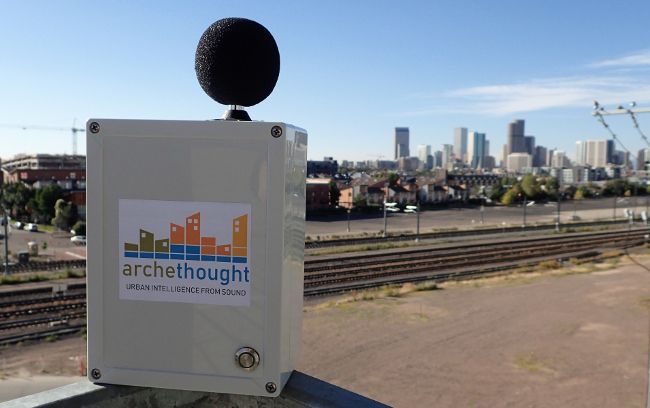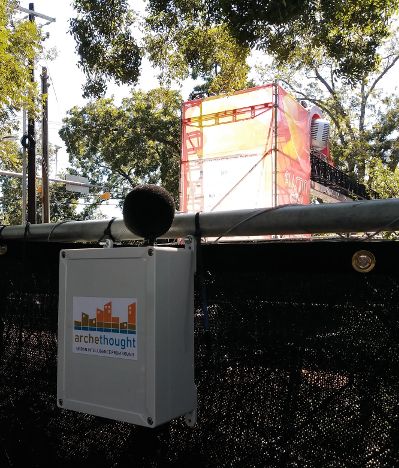Sound Economic Vitality.
Understanding Life at Night, and nightlife economies.
Urban Intelligence from Sound
By 2050, more than two-thirds of the world's population will live in the city. The demand for nightlife activities in our city's looks to increase over the next 20 years.
Summary
Cities recognize venues and music festivals to be an important contribution to city vibrancy and viability, but cause noise pollution for nearby neighborhoods. Working with our sound monitoring tools, cities are now able to see real time sound data and begin developing new smarter sound based civic services.
The night economy makes an important contribution to city vibrancy and viability. From entertainment districts to hospitals, “life at night” is part of how we live, work, and play in urban places. Nightlife contributes to culture and economic development, though also presents challenges for public safety, transportation, and quality of life.
Life at night:
-
is how we live, work, and play
-
is culture and economic vitality
-
contributes to city vibrancy and sustainability
-
presents challenges for public safety, transportation, and quality of life across our communities and urban spaces.
Valuing the night economy while navigating its downsides raises a number of questions for cities.
For example, how can residential and entertainment uses successfully co-exist? How can mobility for visitors and workers be managed for safety and efficiency? How do we ensure creatives aren’t displaced as neighborhoods change? Local residents may not like the sound levels originating from a particular neighborhood venue and may call the police to make a noise complaint, without actually knowing whether sound levels are above municipal ordinances or not - is it too loud, right now?
Problem
As entertainment venues and music festivals become more prominent in close proximity to community residential areas, friction around sound levels arise. It has become extremely common everywhere to see conflict occur around venues and festivals between residents, event producers, enforcement officials and sound engineers over sound levels.
Attaining a near or real time understanding of urban sounds is an increasing challenge faced by communities around the world. Whether for the purposes of nightlife economy, quality of life, or public safety sound has not been a tool available to many cities until now.
Aim
Cities look to deploy SmartVenue™ sound level monitors at multiple areas around their communities, and public parks where festivals are held to capture sound data, relay and store that data in the cloud giving near real time sound data access to sound engineers, event producers, code enforcement officials, and community members.
Furthermore, cities look to leverage the advanced capabilities of SmartVenue™ to enable sound recognition. Sound recognition which may be used to enhance public safety applications, augment venue permitting and ordinance applications, or provide real time insight too traffic safety applications.
Use cases for urban sound data continue to manifest with each new conversation. Those which are most prominent include combating urban noise pollution, creating responsive and engaged communities via information visibility and sharing, through public safety applications.
As urban renewal projects sweep across communities cities are looking to Archethought to deliver new insights, inferences, and intelligence through our Universal Sensor Framework (USF™). Applications being sought after are for traffic safety, high fidelity and high definition urban mapping, security applications, smart infrastructure, smart tourism, urban economic development and defense, as well as air quality, and more.
SmartVenue™ began with humble intentions to help our music and entertainment cultures sustain against rapid urbanization by enabling the visibility of sound level data that may be the basis for noise complaints. Noise complaints are a growing global challenge threatening the venue, festival and music economies of many cities around the world. SmartVenue™ during its validation phases created a change in human behavior between the venue producer, sound engineer, resident and enforcement officer allowing for self regulating conversations rather then confrontation, fines and litigation.
SmartVenue™ has been used at music festivals and in their surrounding communities to see what sound levels actually are in real time, allowing the sound engineer to adjust accordingly, the resident to see those levels at the same moment in time as enforcement officers, and allow those critical, and scarce, resources to focus on situations that deserve their attention.
The overall aim of SmartVenue™ has been to change the noise conflict dynamic, and SmartVenue™ has achieved that.
Approach
Our SmartVenue™ tools directly addresses noise conflict - combining Internet of Things (IoT) technology to obtain real-time sound reading data with open information sharing. Going even further, we help everyone understand the HERE AND NOW of venue sound levels, the neighborhood resident, the event/venue producer, the sound engineer, and the police department.
Furthermore, the advanced capabilities of SmartVenue™ enable sound recognition. Sound recognition which may be used to enhance public safety applications, augment venue permitting and ordinance applications, or provide real time insight too critical emergency response applications.
Archethought SmartVenue™ sound monitors have a simple provisioning process connecting them to the Archethought Smart City Cloud Platform™. SmartVenue™, an application of Archethought's Universal Sensor Framework™ (USF™), is an ultra-low power consuming solution, capable of battery, solar power or power over Ethernet, meaning there is no requirement for certified electrician installation simplifying deployment requirements.
Deployment and activation of SmartVenue™ can be achieved in a matter of days dependent upon the scale of application. Installations can be mobile, temporary or permanent providing a flexibility to achieve effective, and attainable urban sound maps.
Once installed and operational the Archethought platform offers incremental sensor abilities beyond sound levels, data augmentation and enrichment of existing data silos and processes through the Archethought Smart City Cloud Platform™ integration engine (Archethought MetroBus™), as well as many edge computing capabilities, and applications based upon urban informatics (traffic counting, public safety, smart tourism).
In context to Life at Night, we listen, learn and inform what sounds convey to us.
Our SmartVenue™ tools and solutions help city's understand sound.
-
We capture sound data.
-
We recognize different sounds.
-
We provide sound insights.
-
We build sound solutions.
-
We do not listen to, or store conversations.
Result
The outcomes and goals of SmartVenue™ include:
-
Increased Responsive and Engaged Communities - sound monitoring helps communities engage residents in beneficial conversation that disrupts noise conflict dynamics reducing noise complaints.
-
Increases Nightlife Economy Vitality - accessible and transparent sound monitoring helps nightlife venues harmonize with local neighborhoods and improve reputation within the community.
-
Urban Intelligence from Sound - 24/7 sound monitor deployments, and intelligence applications introduce new ways to understand how daily life sounds impact our health and safety.
-
Improved Public Safety - urban sound monitor deployments, and intelligence applications introduce ways to reduce critical resource response times.
-
Improved Quality of Life - urban sound monitoring helps combat noise pollution fostering quieter communities reducing rest period interruptions.
Frequently Asked Questions
Who would use SmartVenue™ and why?
We are seeing an unprecedented change in the urban environment, population density and entertainment lifestyle choices are fueling noise conflict and lawsuits between developers, residents and entertainment venues - all centered upon increasing sound levels. When deployed at a venue, or throughout a community, SmartVenue ™ helps break this noise conflict dynamic by making sound levels visible to everyone in near real time, changing the conflict into conversation. Making for quieter neighborhoods, defending our entertainment venues, and improving quality of life for everyone.
How accurate is the noise monitor?
Using Class 2 (Type 2) monitors gives +/- 2 dBA accuracy.
Is the sensor system waterproof?
The electronics are contained in an IP65 water resistant case. However the microphone sensor should be protected from direct rain.
Can we download the noise sensing data for our own spreadsheets?
Yes, your data is your data. Download is available directly from the web interface. One-click, then copy and paste.
What is different about your solution?
Noise monitoring is difficult without traditionally expensive equipment and specialist skills.
By storing data permanently in the cloud, future analyses are based on real data, significantly improving planning.
Will users of your solution be able to use a smartphone or web browser to view the data?
Yes.
Remember when you didn’t have a smartphone, GPS, and navigation? When key information requires internet access, people find a device and learn how to use it.
Are the display solutions customizable?
Yes.
We provide a white label mechanism to include logo and other municipal information for the easy-to-use web interface.
Got Graphs?
Yes. Tons of them.
What else can it do?
We are glad you asked!
SmartVenue™ has been designed with scalability in mind from day-one. At it's heart SmartVenue™ is built upon the Archethought Universal Sensing Framework™ (USF), also affectionately known as Yousef. Our USF allows for incremental sensors to be deployed at the edge with digital signal processing performed at the time of sensing, USF allows SmartVenue™ to not only hear, but also see and smell. Of course, based on your needed application.

